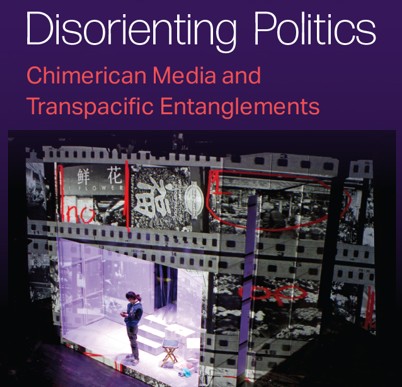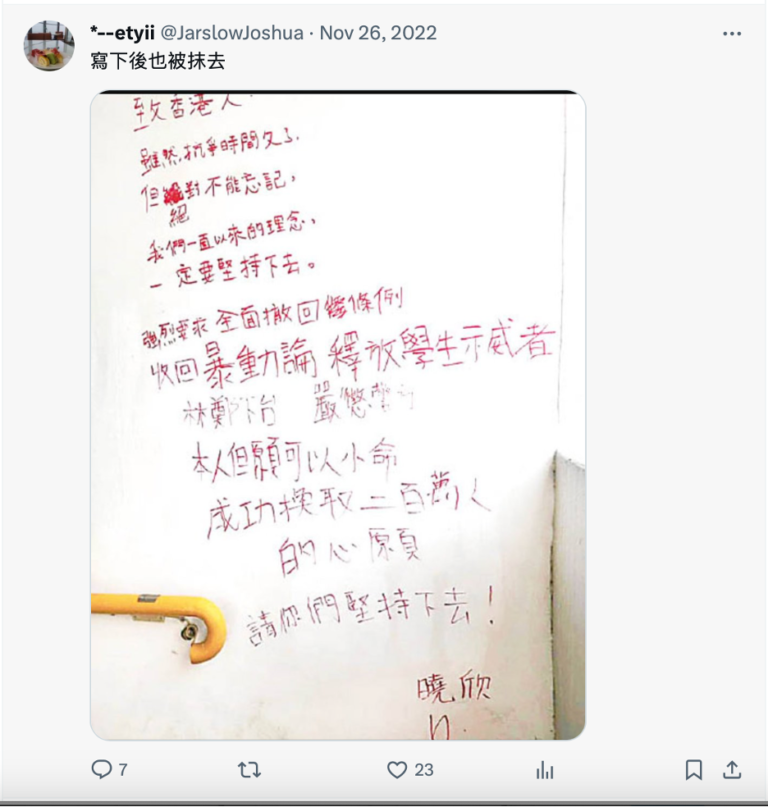Delores Phillips and Cultural Studies Association’s Globalization and Culture Working Group Co-Host Kathalene Razzano discuss Disorienting Politics: Chimerican Media and Transpacific Entanglements (University of Michigan Press, 2024) with author Fan Yang, along with writer and historian Mark Tseng-Putterman. This podcast is accompanied by a scholarly commentary by Marcus Breen.
Keyword: China
Chimerica: Disorienting Politics
Delores Phillips and Cultural Studies Association’s Globalization and Culture Working Group Co-Host Kathalene Razzano discuss Disorienting Politics: Chimerican Media and Transpacific Entanglements (University of Michigan Press, 2024) with author Fan Yang, along with writer and historian Mark Tseng-Putterman. This podcast is accompanied by a scholarly commentary by Marcus Breen.
Affective Aesthetics: Mapping Visual Cultural Memories in the 2022 Anti-Zero-COVID Policy Protest in China
This article examines the meaning‐making work of historical, cultural, and visual references in the 2022 anti-Zero-COVID policy protests in China. Characterized by homemade protest placards, the wave of 2022 grassroots protests were striking, typically citing well-known historical quotes, written in red paint, or the use of plain white paper. Using the frameworks of affect theory and analyses of visual culture, I draw attention to underexamined forms of Chinese cultural and visual traditions of protest, and address the following empirical questions: Which national visual cultural references are mobilized in this contemporary protest; how do people repurpose specific cultural idiosyncrasies to voice political dissent; and how do these references contribute to local political meaning‐making and community-making? Via a qualitative analysis of such signs, this study identifies three types of cultural resources permissible by the state that became co‐opted in the protests: 1) literature from anti-imperial times, 2) motivational slogans and symbols from the cultural revolution, and 3) the contemporary technique of censorship. These references are appropriated for the potential afforded by their recognizability, their affective function to articulate the political cause, and their ability to bypass censorship and generate communities across national and regional boundaries. Examining the A4 Revolution as a paradigmatic case, I argue visual historical citation holds significant aesthetic, affective, and political value, particularly in its capacity to mobilize the masses within undemocratic environments. The affective visuals used in the protests can be read as a performative, strategic, and psychosocial device of “critical inheritance from the bottom up,” one that invites citizens to re-access cultural memory and critique the oppressive present.
Shit in Our Time: An Unsettling Epoch of Metabolic Disturbance
Human waste, often regarded as a source of disease, disgust and impurity, is being redefined as “humanure” by environmental activists, serving as a solution to land degradation in the midst of the anthropogenic crisis. Although a circular view that humans are not merely consumers of food but the producers for healthy soils has arisen, it can easily be overlooked. In China, the beneficial use of human waste, or “nightsoil,” for food production has a long history. Drawing from my mother’s intimate experience with humanure during the socialist era in China, I explore the metabolic politics of humans and soils. This politics reveals a unique cultural economy that was once constituted to complete a cyclic change from food production to consumption, intertwining the valuation method of humanure, toilet technologies, and the rural–urban exchange. I introduce the context of metabolic disturbance to rethink environmental sustainability in relation to the dynamics of our farming practice and sanitation/disposal system in China and beyond. I propose alternative ways to value human waste, aiming to nourish our civic imagination of food by transforming our metabolic relationship with soil, agriculture, food, and waste.
Political Power and the Industrial Development of Cultural Artifacts in China
With national policy support on industries that produce cultural goods and artifacts, Chinese industries have developed quickly in recent decades. Some cities and their industries are led by the central government, while others are led by the local government. In this paper, the author uses ceramic industry clusters in Jingdezhen city (central-led) and Longquan city (local-led) as a comparative study to illustrate the political power relations of government-led cultural artifact industry development in China. In sum, the excessive emphasis on political hierarchy and centralized control of production management will weaken the cultural essence of the local cultural artifacts. The localized government-led development strategy is positive to preserve the cultural essence and design a befitting local industry development strategy in Chinese cities.



